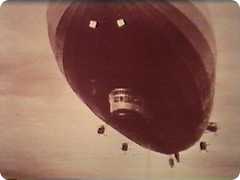
|
|
||||||||
John Fleetwood Baker
Early Years
| Baker had read Engineering under Inglis, and obtained a first class honours degree in 1923. After graduating he worked for the Air Ministry on the structural problems of airships. |  |
| A 1920's airship |
In 1929, at the age of 28, Baker contracted tuberculosis and was told he would never be able to work again. However, economic necessity drove him back to work as a Technical Officer with the Structural Steel Research Committee. This committee aimed to produce a code of practice for the design of steel framed structures. Tests carried out on real buildings in the 1930s showed that stresses measured on site bore little relation to those calculated using the code of practice. It was this revelation that led to Bakerís life work in the development of a plastic theory of design. This led to a revolutionary method of steel design, which was of immense value during the second world war, and was continued afterwards by his team at Cambridge.
In 1933, Baker was appointed to the Chair in Engineering in Bristol. He left at the outbreak of war in 1939 to become Scientific Adviser to the Ministry of Home Security.
